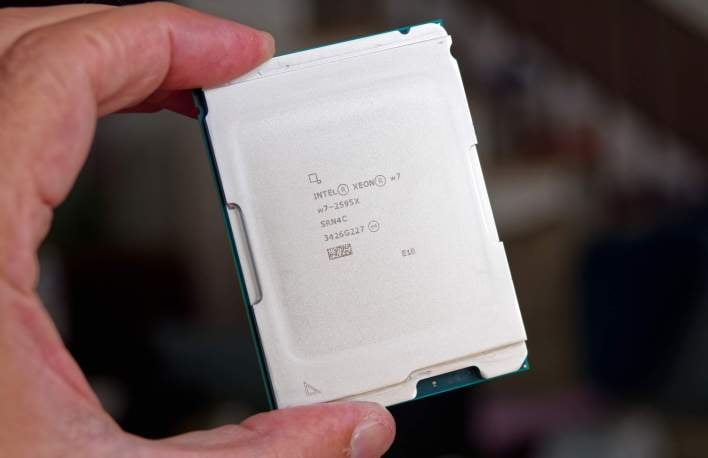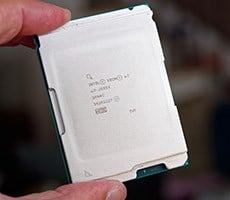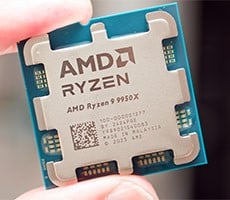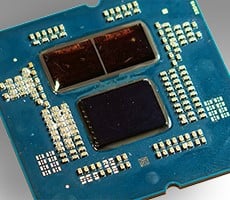Intel Xeon w7-2595x Review: All P-Core Pro Workstation Power
We didn’t go nuts with our Xeon w7-2595X sample, but did experiment with some of the settings available in the ASUS Pro WS W790-ACE motherboard we used for testing to see what kind of additional performance we could wring from the platform.
Overclocking The Intel Xeon w7-2595X
We already mentioned the performance mode option previously, which can have a profound impact on performance in 3DMark – but it didn’t do much in many other apps, and negatively impacted some games. The Xeon w7-2595X’s default configuration, however, is relatively conservative, especially in comparison to mainstream, desktop consumer processors. The Xeon w7-2595X’s maximum, officially supported memory speed is only DDR5-4800, but the chip (and our G.SKILL memory kit) are capable of much higher frequencies. ASUS also offers a multi-core enhancement feature that unlocks higher power levels and it has a baseline overclocking option when using a liquid cooler – which we are.So, we enabled everything together to see how it would impact the Xeon w7-2595X’s performance…
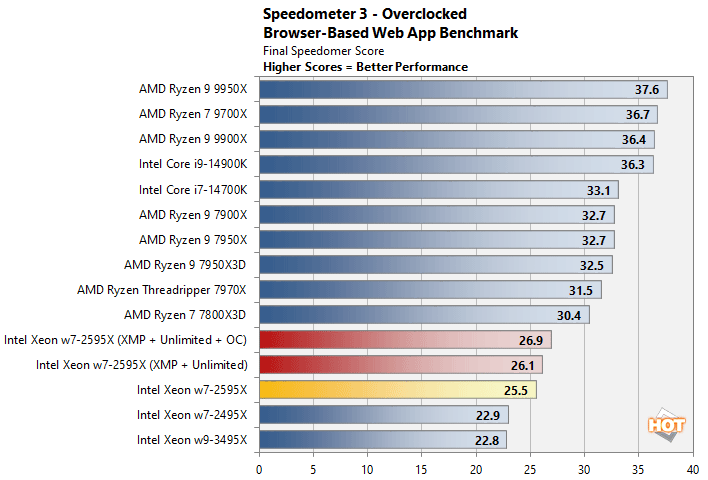
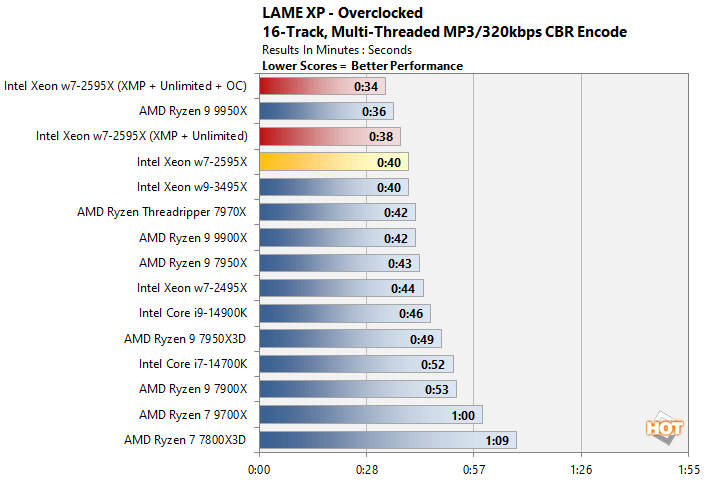
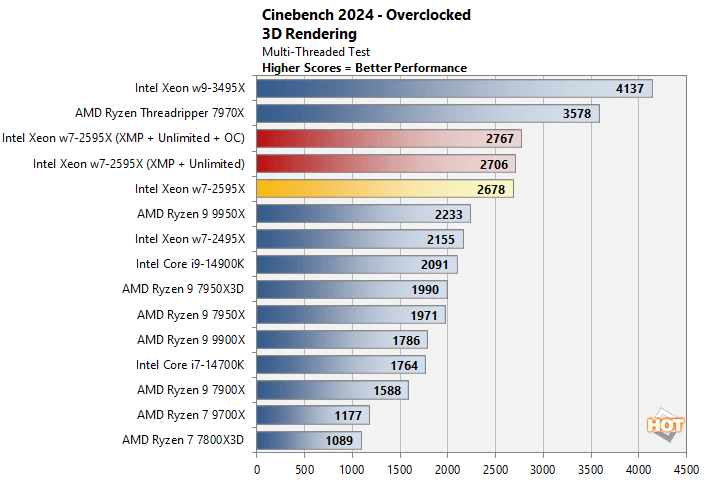
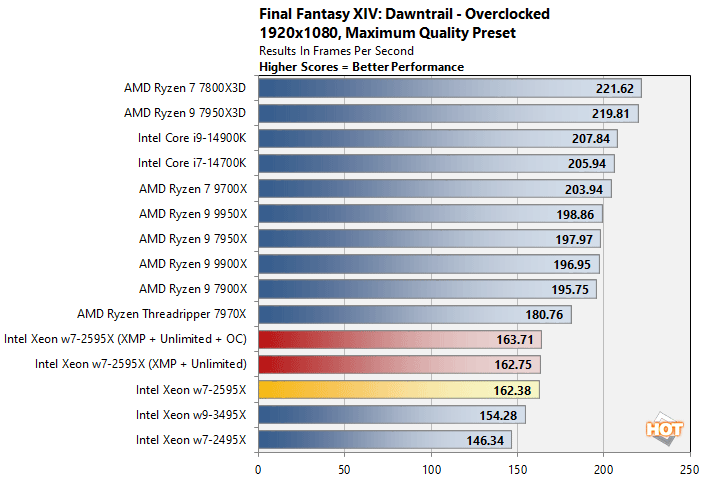
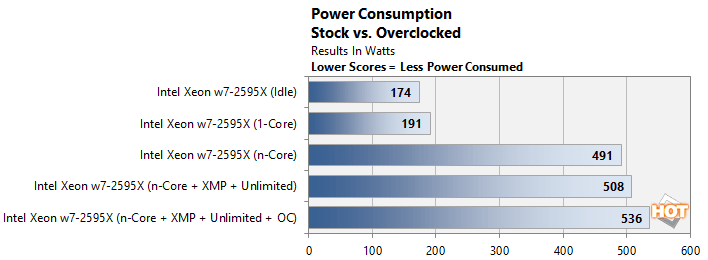
We also measured power while overclocking and saw some modest increases in peak consumption. Enabling XMP and unlocking the power limit bumped peak power up by only 17 watts. Then flipping on the water cooled overclocking preset bumped things up another 28 watts. Considering how many cores are at play here, those are some pretty modest power increases. That said, if you push the chip to the the ragged edge, expect larger increases than what we show here and ensure your cooling is up to snuff.
Intel Xeon w7-2595X: Our Deep-Dive Review Verdict
Perusing our benchmarks tells much of the Xeon w7-2595X’s story. These many-core pro workstation processors are not for everyone and they don’t excel with every workload. Because of the Xeon w7-2595X’s relatively low clocks in relation to the latest mainstream desktop platforms, and its somewhat higher memory and L3 cache latency, this many-core processor often trails cheaper parts in single or lightly-threaded workloads. Bang on all of the Xeon w7-2595X’s cores and tax its memory bandwidth, however, and it will clearly distance itself from mainstream desktop processors. With rendering, ray tracing, and encoding workloads (among others), processors like the Xeon W or AMD’s Threadripper are simply on another level versus mainstream CPUs. And that's not even considering the amount of high-performance expansion possible with all of those PCIe Gen 5 lanes avaialbe.With an MSRP of $2,039, along with the price premium currently associated with W790-based motherboards and DDR5 RDIMMs, the total cost of a Xeon W system will also put it out of reach for many consumers. If you’re the type of user than can benefit from the extreme connectivity and multi-thread performance, however, these high-end platforms will often pay for themselves over time. Shaving hours (or days) off rendering or compilation times, or accelerating various highly parallelized scientific workloads, are priceless for some users, and that’s who Intel is targeting with the Xeon W. If you fall into that category, the Xeon W-2500 is clearly superior to its previous-gen counterparts and competitive with AMD’s Threadripper 7000 series on a per-core basis, though Threadripper has an edge in power efficiency.
All told, the Xeon W series is a very powerful platform. If your use case will be enhanced by a many-core processor with massive amounts of memory bandwidth and tons of IO, a Xeon W should serve you well and we’re happy that Intel continues to inject some adrenaline into the HEDT and pro workstation space. Intel partners including HP, Dell and Lenovo, will being taking orders for Xeon W-2500 and W-3500 based systems starting today, with system availability beginning in September.


